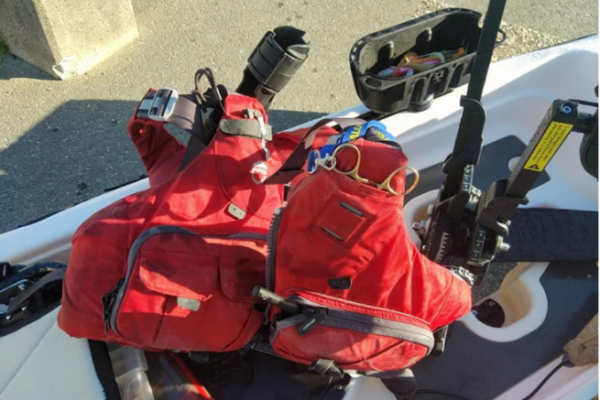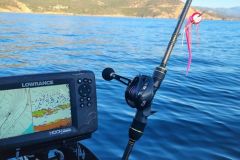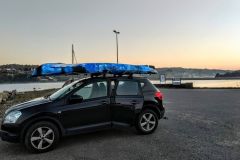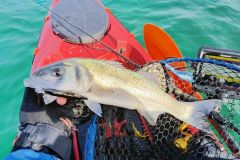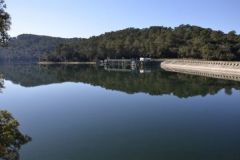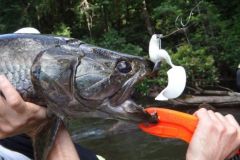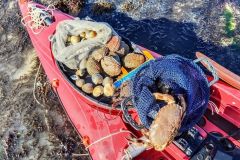First of all, whatever brand or type of vest you choose, it needs to be adapted to your body shape and distance from the target.
My starting point is a 50N buoyancy aid vest, compliant with the NF EN ISO 12402-5 standard. A vest with pockets that many brands offer and that most kayak anglers use. To save time on the water and avoid searching for the utensil you need on the spot, things are always stowed in the same place. This becomes a reflex conditioned by habit when you need to take out a chisel, the VHF or the knife...
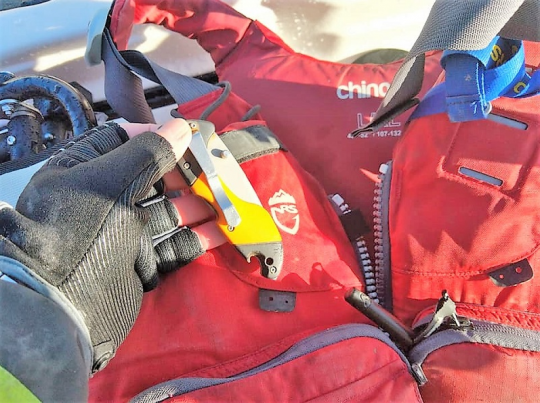
Safety equipment
Let's see how it's arranged. The most important thing is not to overload these practical multi-pocket vests. The safest of them all is tucked away in the lower left pocket, the portable VHF, in permanent standby mode on channel 16 (part of the 2025 safety regulations). It's a floating model, and I've been carrying it around with me for years. Don't forget to check the battery charge before setting off. A declaration to the ANFR is mandatory for the use of frequencies. This is free of charge. The flashlight is also in this pocket, and is compulsory. In principle, they have a lifespan of 5 years. They must be able to stay lit on the water for at least 06 h 00. This one has been replaced since the photo...
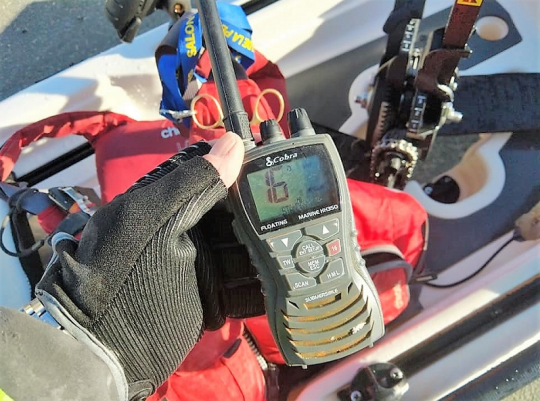
Then, in the top right-hand pocket, I slip in the survival knife, which I use to take the top off a drink when snacking, but which also cuts a net line if you get tangled up in it. In this same pocket, I also slip the whistle with its leash.
Small fishing and DIY equipment
So much for the safety gear, now let's take a look at the small fishing and DIY equipment. In the top left-hand pocket, I slip a stainless steel long-neck disgorger. Connected to the vest by a leash. In the same pocket as the VHF, I've got a multifunction Leatherman, a safe bet for a multitude of tasks...
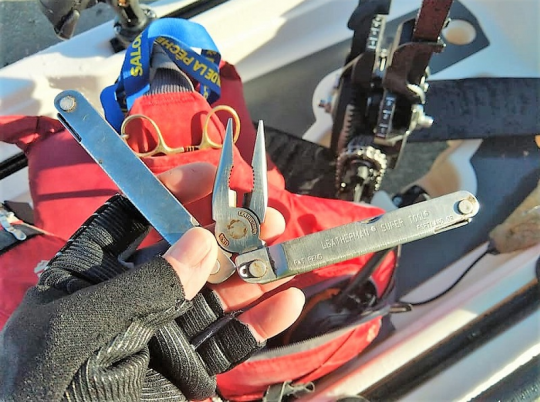
Small fishing tackle is in the lower right-hand pocket. Fluorocarbon spools, small scissors for cutting braid, small watertight box with spare staples. I also slip in the paper certificates for the kayak's registration with Affaires Maritimes and the declaration for the VHF. These papers are kept in a plastic bag. You need to be able to produce them in the event of an inspection on the water.
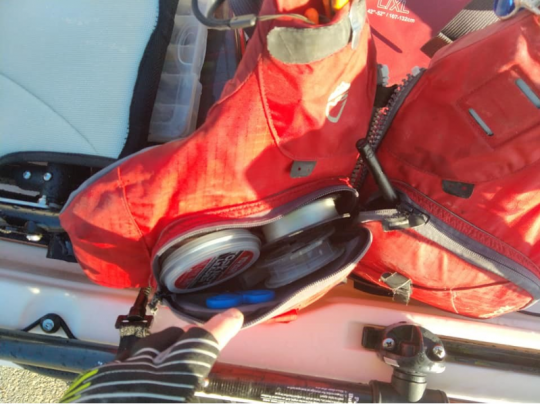
It's all neat and tidy, and your vest is just a kilo heavier. You've got all your gear within easy reach and always in the same place, so you can find the utensil you need straight away. No need to contort your body to get something from behind the seat or in the front trunk. And of course, I'll say it again: a vest is only effective if it's worn!
